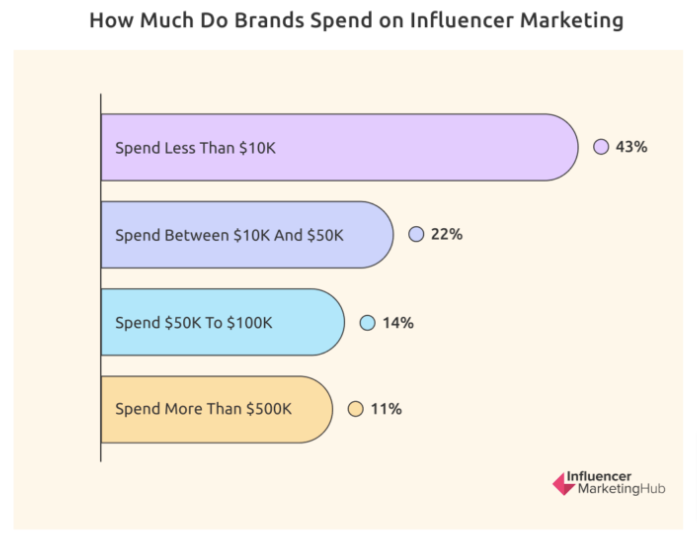Over four-fifths of marketers who run influencer campaigns believe working with influencers is an effective way to achieve their marketing goals, according to research from the Influencer Marketing Hub (IMH).
But there are no guarantees in marketing.
Running a successful influencer marketing program is difficult, so it’s vital you use the right tools to find complementary influencers, manage your campaigns, and track the results.
In this article, we examine why influencer marketing works, consider the key challenges to effective influencer marketing and round up 10 of our favorite influencer marketing tools and platforms.
Why Influencer Marketing?
Spend a few minutes scrolling your Instagram feed or TikTok For You Page, and you may feel the world is oversaturated with influencers.
Yet evidence suggests we’re still highly receptive to their messaging.
Research from martech company IZEA discovered that 36% of consumers feel influencer posts are the best way to encourage them to try new brands, while 46% have purchased products promoted by influencers. Furthermore, 62% of social media users said they trust opinions and recommendations from influencers more than those of celebrities.
This marketing approach drives awareness, cultivates an audience, and bolsters owned media over time. The effects of influencer marketing on your inbound efforts can include:
- Building social proof and word-of-mouth advertising
- Increasing website traffic
- Improving SEO by building links from high-authority domains
- Expanding reach
- Driving conversions
Challenges of Influencer Marketing
Influencer marketing is expensive. Almost half of the brands surveyed by the IMH spend $10,000+ per year on influencers, and one in ten shell out over $500,000.
Given the significant budgets involved, marketers want to feel confident that their influencer activity will yield the desired results. Yet the IMH’s survey also identified a variety of challenges.
Of these, the most commonly cited was the difficulty of finding influencers to participate in campaigns, with 36.3% of respondents ranking this as their top concern. A further 15.3% struggled with processing payments to influencers, while 14.9% referenced the challenge of measuring ROI and campaign results.
Other potential headaches include managing influencer contracts and campaign deadlines (cited by 13.2% of respondents) and dealing with bandwidth and time constraints (13.3%).
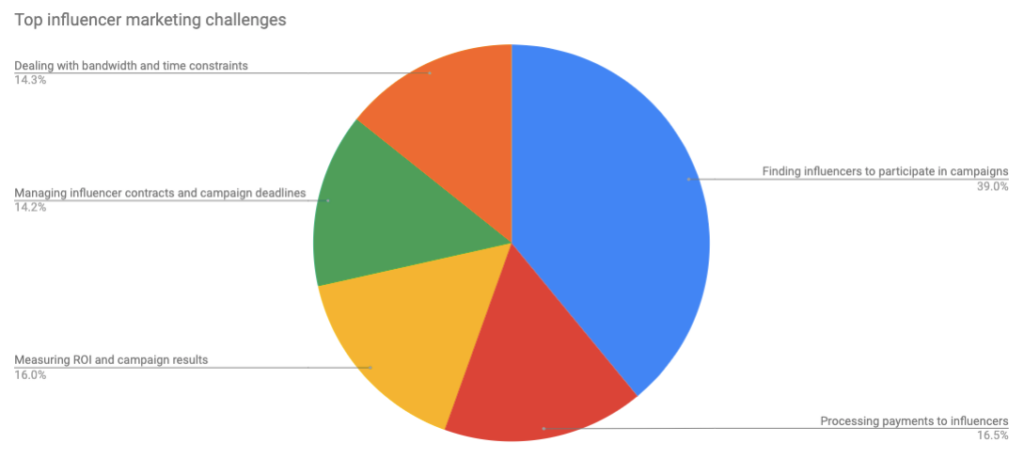
Fortunately, each challenge can be mitigated — or removed entirely — by building an effective influencer marketing tech stack.
10 Best Influencer Marketing Tools
There’s no shortage of high-quality influencer marketing tools, from finding influencers to processing payments to tracking results. Here are ten of the best:
1. Affiliatly
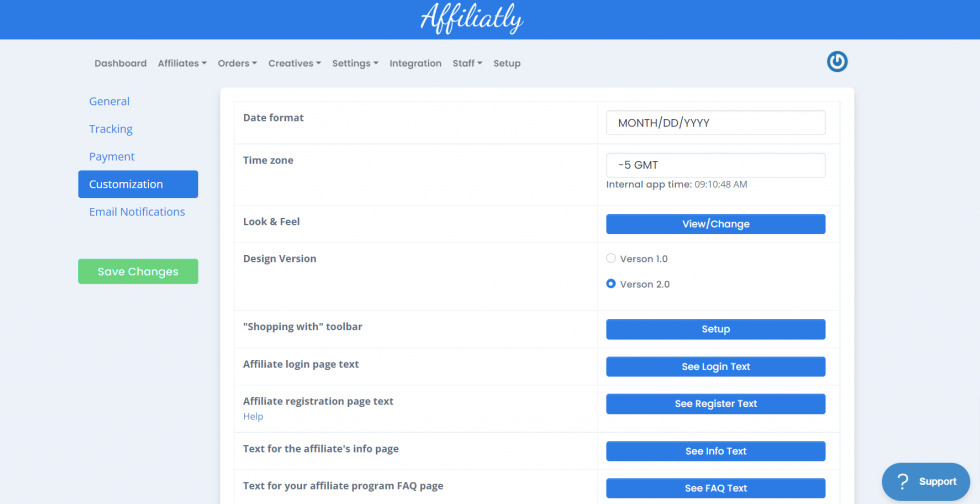
Affiliatly isn’t a dedicated influencer marketing platform. Instead, it provides affiliate tracking software for e-commerce stores. So why are we mentioning it?
Simple: because it offers an easy way for brands to run influencer marketing campaigns at scale.
Rather than contacting individual influencers, you can run an influencer program through Affiliatly and encourage content creators to sign up in bulk. You give them unique referral links to include in their product posts, and when one of their followers buys something, they earn a commission — as defined by you.
This approach simplifies building a network of dozens or hundreds of trusted influencers. It also guarantees a return; you only pay influencers when they drive sales.
The only downside is that this method makes attracting established influencers with substantial followings challenging. They often require a more personalized approach.
Pricing: From $16 per month for up to 50 affiliates.
Best for: Small businesses who want to build a scalable influencer program.
2. BuzzSumo
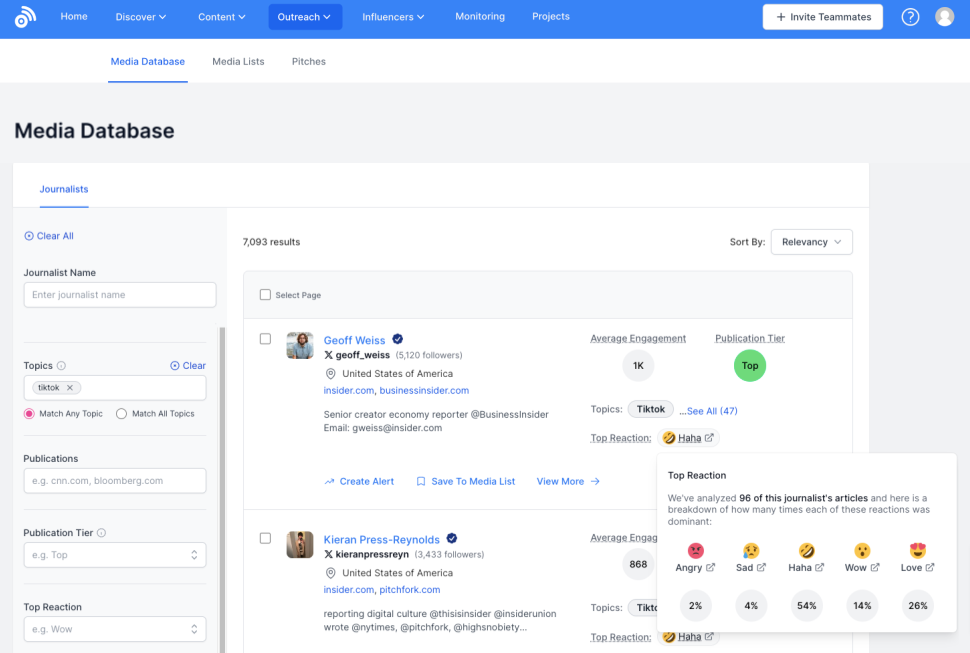
While Buzzsumo may be best known as a content discovery tool, it also offers tools to help social media marketers amplify their content through influencer marketing.
Have you invested a lot of time and effort into creating your latest blog post, ebook, or video? With BuzzSumo, you can instantly identify influencers who typically share content like yours. This means you spend less time chasing weak leads and more time cementing relationships with the right people.
The platform also features a database of 500,000 journalists. So, if you’ve got a big announcement to make and want to generate the highest possible reach, you can track down the most influential voices in your niche (along with social engagement data for their latest content).
Pricing: Starts at $199 per month (or $159 per month if you pay annually).
Best for: Leveraging influencers for content promotion.
3. Traackr
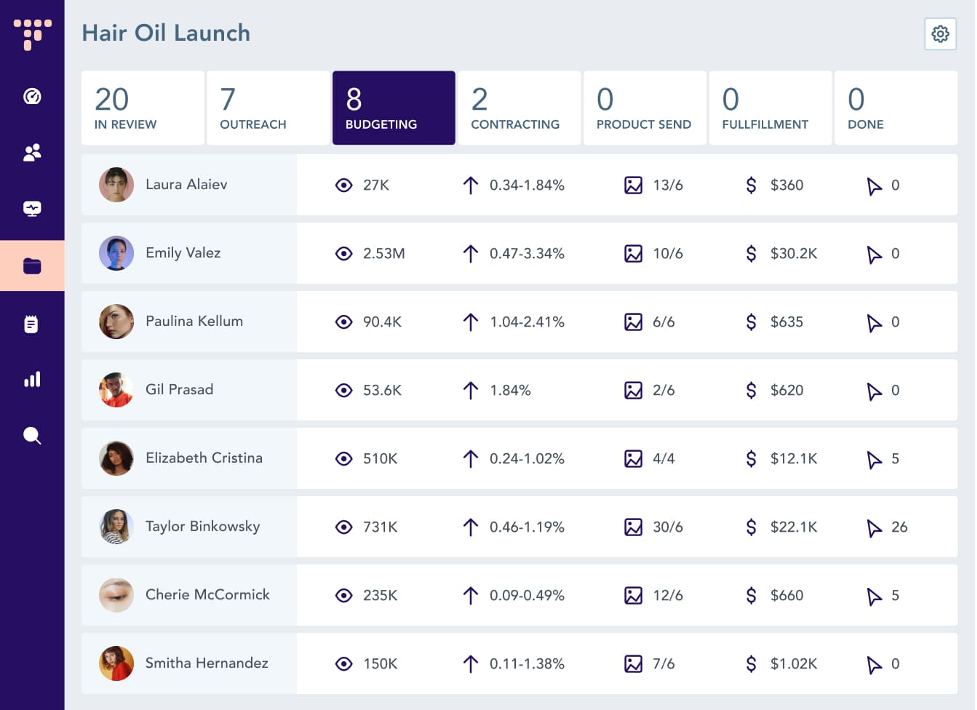
Traackr bills itself as a complete influencer marketing software solution with tools for a wide range of influencer use cases, including:
- Identifying relevant influencers
- Tracking campaign spend and measuring performance
- Automating influencer payments
However, its most useful features are related to managing your conversations with influencers. The platform acts as a CRM system for influencer campaigns, giving you a single source of truth for your influencer relationships.
From maintaining records of previous collaborations to reminding you of an influencer’s upcoming birthday, Traackr takes all the legwork out of building watertight partnerships with creators in your niche. You can even divide groups of influencers into custom segments based on factors like location and shared interests so you can share personalized communications at scale.
Pricing: Schedule a call for a custom quote.
Best for: Building relationships by managing communication.
4. Pitchbox
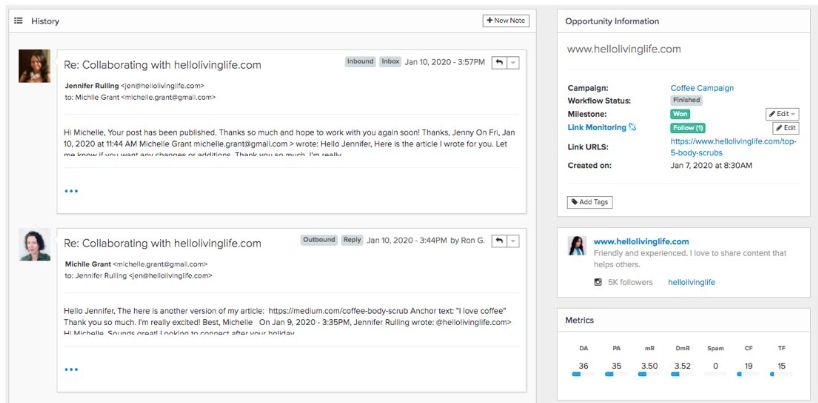
Like Affiliatly, Pitchbox isn’t exactly an influencer marketing tool. It’s designed for SEO and outreach specialists who run link-building campaigns. But its ability to help link-builders craft personalized communications is also super helpful for anyone managing influencer campaigns.
The platform’s dedicated personalization tools make crafting more engaging influencer outreach campaigns quick and easy, increasing the likelihood that potential influencer partners will open, read, and respond to your messages.
However, it’s worth pointing out that this is one of the more expensive tools in our roundup, with its Enterprise-level tier priced at a cool $1,500 per month. The expense is a lot easier to justify if you use Pitchbox for communicating with influencers and running outreach campaigns.
Pricing: Priced from $550 per month or $495 per month when billed annually.
Best for: Building and managing personalized influencer outreach campaigns.
5. Mailshake
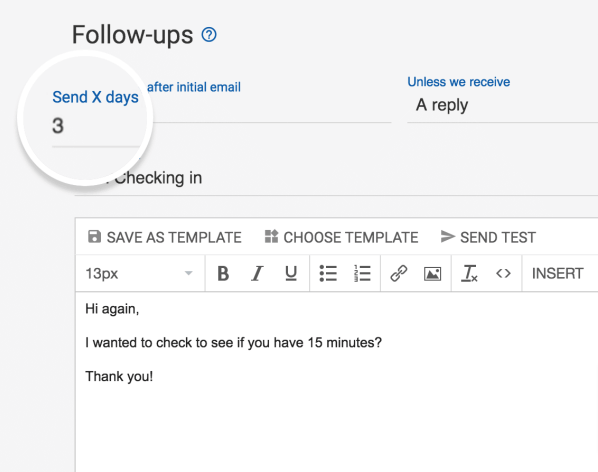
Think of Mailshake as a (much cheaper) alternative to Pitchbox. While it doesn’t have the latter’s wealth of functionality, Mailshake makes it quick and easy to build automated outreach campaigns — perfect for plugging in a list of influencers you want to work with and targeting them with multi-phase email workflows.
The platform allows you to add personalized links and text to each message, customize your sending schedule for each prospect to boost open and response rates, and improve campaign deliverability by pausing sequences when a specific email address replies, bounces, or unsubscribes.
Plus, you can build and store email templates, so when you hit a winning formula, you can return to it repeatedly.
Pricing: The data finder for tracking contacts and email addresses is free. Outreach functionality is priced from $58 per month.
Best for: Running automated email outreach campaigns.
6. Snov.io
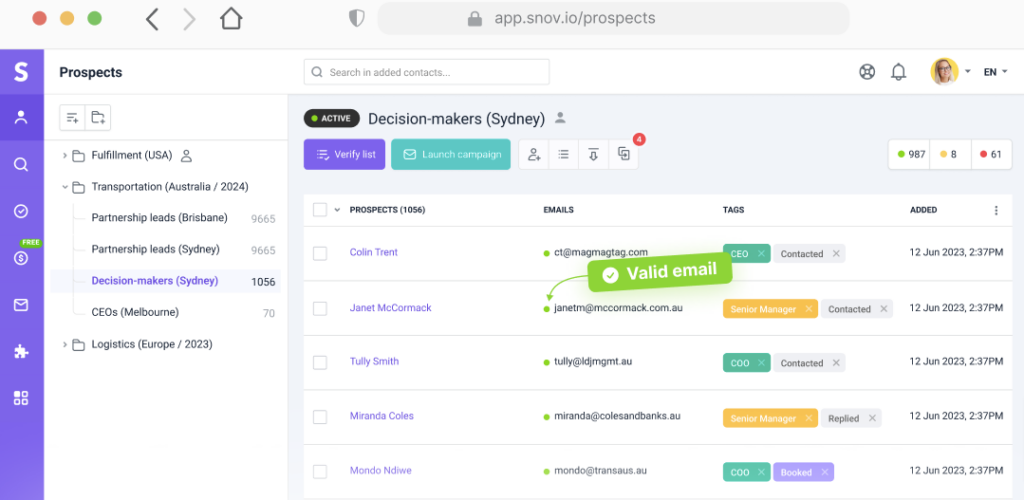
Found the perfect influencer for your next campaign but don’t want to rely on DM-ing them on Instagram to share your collaboration plans? Snov.io is the ideal solution, with tools for tracking down and verifying email addresses. In the last 12 months, the platform has helped 680,000 users find more than 500 million leads.
But it’s not just about finding email addresses: Snov.io also helps you build automated email drip campaigns with unlimited follow-ups, giving you the best possible chance of generating responses from the influencers you want to partner with.
Pricing: You can get 50 credits free of charge. Paid plans start at $39 per month (or $30 per month when billed annually) for 1,000 monthly credits.
Best for: Tracking down influencer email addresses.
7. Mavrck
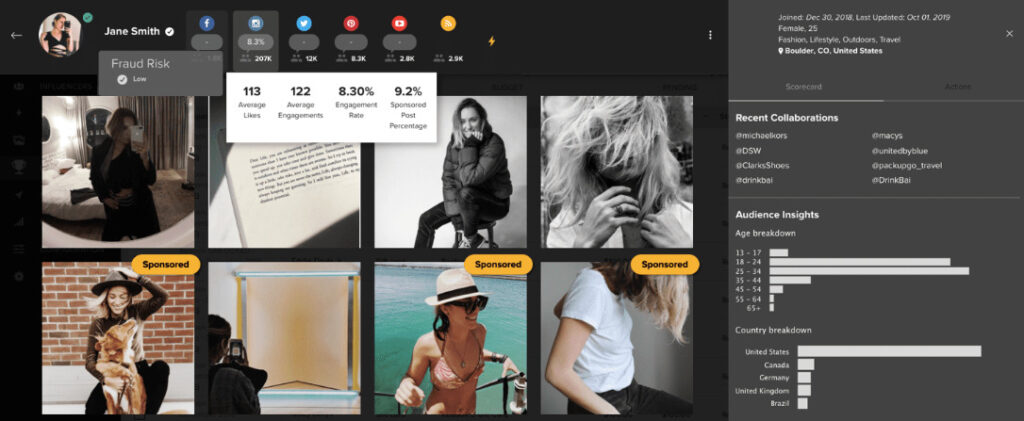
Mavrck is another all-in-one influencer marketing solution with tools for discovering, activating, managing, and incentivizing influencers (and tracking campaign results).
In other words, it does a lot of stuff. But it really excels at connecting brands with relevant influencers. Mavrck’s global influencer index includes millions of macro and micro-influencers across multiple social platforms, including Instagram, Facebook, YouTube, Pinterest, Twitter, and TikTok.
Leverage over 20 search filters to identify the perfect influencer for your next campaign based on audience demographics, fraud risk, and historical performance data. No more aimlessly Googling or trawling Instagram for potential influencer partnerships!
Pricing: Personalized quotes are available on request.
Best for: Big brands looking to scale their influencer marketing activity.
8. CreatorIQ
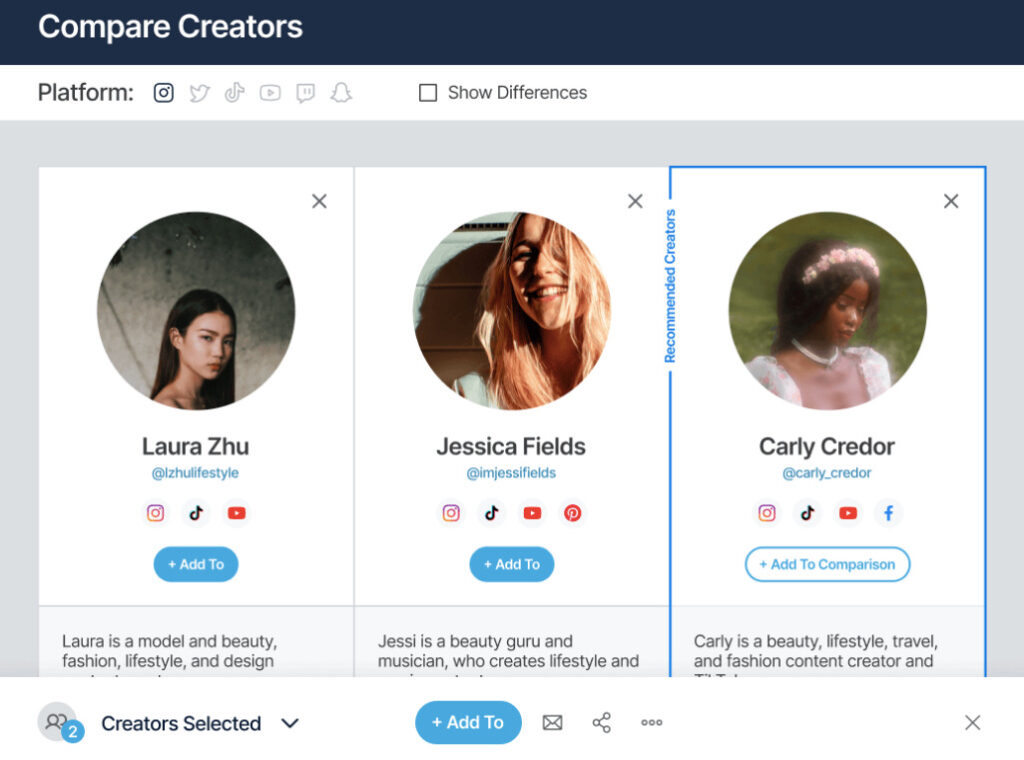
Sticking with the theme of influencer identification, CreatorIQ is an AI-powered solution that helps marketers match up with recommended influencers using criteria like platform, engagement rate, and audience.
Rather than relying on simple keyword matching to identify influencers in your niche, CreatorIQ uses natural language search to help you hone in on only the most relevant results. It can also recommend future campaign partners based on creators you’ve liked or worked with before.
Having tracked down a high-potential influencer, use CreatorIQ’s brand fit and suitability tools to quickly identify safety and integrity issues and assess how well they align with your brand.
Pricing: Available on request.
Best for: Finding influencers who align with your brand and audience.
9. Heepsy
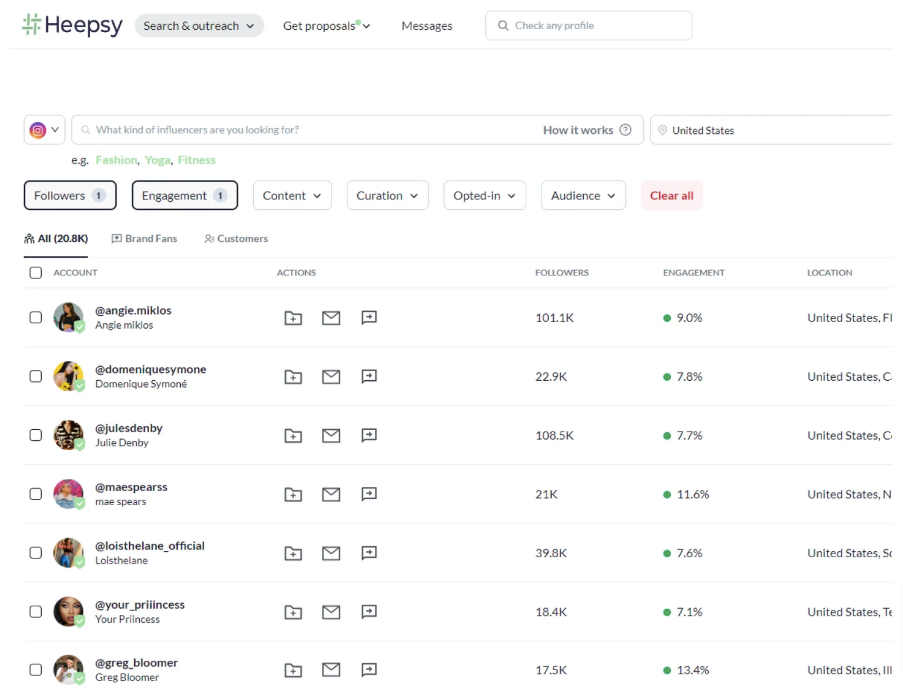
Heepsy is another influencer search tool for finding influencers on Instagram, TikTok, and YouTube. Despite its comparatively low cost, a host of massive brands use the platform, including IKEA, Huawei, and Walmart.
If you already know which influencer(s) you want to work with, you can track down information about their social followings and engagement metrics using social handles. Or build a shortlist of influencers using keywords or search filters, including location, engagement rate, and more.
Once you’ve found several influencers for your next campaign, examine their follower growth, average likes, and average views in more depth to ensure they’re the perfect fit.
Pricing: Free for one user and 360 monthly search results. Paid plans start at $49 per month or $470 per year.
Best for: Finding influencers on TikTok, Instagram, and YouTube.
10. Influencity
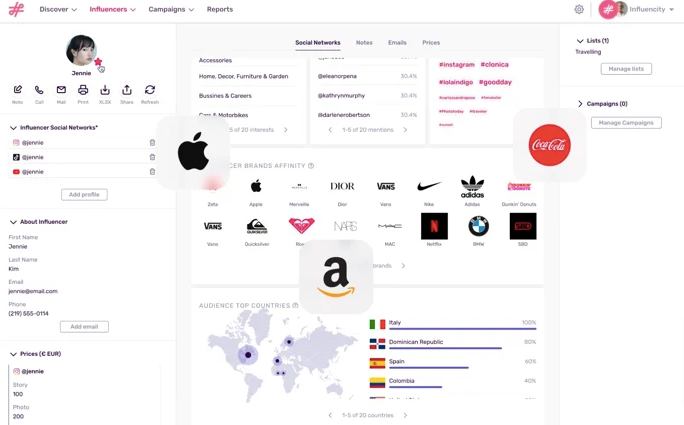
Influencity describes itself as “a better way to manage influencer campaigns,” giving you dedicated tools to run any influencer activity — from product seeding to event invitations to paid promotions.
The platform’s dashboard makes it easy to keep track of the various elements that go into an influencer campaign, including outreach status and content approval stage. Plus, its forecasting features allow you to predict the estimated results of a campaign before you’ve even reached out to an influencer to strike up a relationship.
Pricing: Starts at $98 monthly for one social media network and 2,000 monthly results.
Best for: Managing influencer marketing campaigns and measuring results.
Are you interested in learning more strategies for social media success? Sign up for one of our upcoming social media conferences.
Featured image by Pexels.


